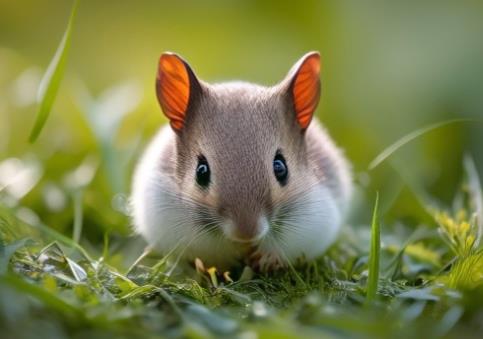Wild hamsters inhabit a wide range of habitats, with different species adapting to various ecological environments. Below is a breakdown of their main classifications and characteristics:

Geographic Distribution
Asian Regions: Northern China (provinces north of the Yangtze River), Mongolia, Siberia, and the Korean Peninsula are primary habitats for species like the Striped Hamster and Greater Long-tailed Hamster. They are commonly found in grasslands, farmlands, and semi-desert areas.
European Regions: The European Hamster resides in grasslands and farmlands across Central and Eastern Europe, with small populations also present in northwestern Xinjiang, China.
Middle Eastern Regions: The Golden Hamster (Syrian Hamster) is native to arid temperate zones in Syria, Lebanon, and surrounding areas.
Typical Habitats
Burrow Systems: Wild hamsters are burrowing animals, with their tunnels reaching 0.5 to 3 meters deep. These burrows include multi-functional zones such as storage chambers and nesting areas, used for sheltering from heat, cold, and storing food.
Altitude Adaptation: They can be found from low-altitude farmlands to alpine meadows at 3,600 meters. For example, China’s endemic Tibetan Hamster lives in river valleys and shrublands at elevations of 3,400 to 3,900 meters.
Climate Preferences: They thrive in semi-arid or arid environments with large day-night temperature differences, such as deserts, grasslands, and hilly areas, relying on burrows to regulate microclimates.
Ecological and Behavioral Traits
Diet and Food Storage: Omnivorous, they feed mainly on plant seeds and insects. Their cheek pouches allow efficient food storage, a habit retained even in captive environments.
Solitary and Nocturnal: Strong territorial instincts lead to a solitary lifestyle (except during breeding seasons). They are active at night to avoid predators.
Breeding Habits: Female hamsters raise their young alone, with offspring becoming independent after 20 days. Breeding is seasonal.
Key Species in China
Striped Hamster: A common species in farmlands of North and Northeast China, with its range extending to the Korean Peninsula.
Greater Long-tailed Hamster: Dominant in agricultural areas of the North China Plain, known for complex burrows and large food storage capacities.
Round-tailed Betta: Though not a hamster, it often shares habitats with hamsters, such as mountain streams in northern China. (Note: This is supplementary related information.)
